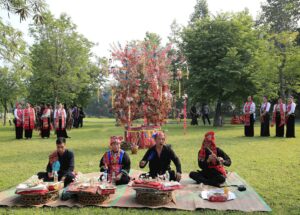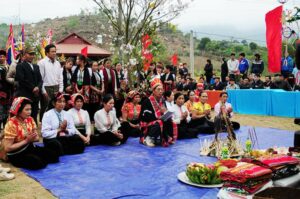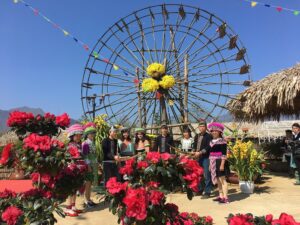Loc Hoa Festival: The Cultural Heritage Of The Xinh Mun Community
In the Vietnam-Laos border area in Son La, besides the Thai, Kinh, and Kho Mu ethnic groups, there are also around 30,000 to 40,000 Xinh Mun people who have settled here for generations. The name “Xinh Mun” means “people of the mountains” and they were previously known as the “Puoc” people (Con Pua).
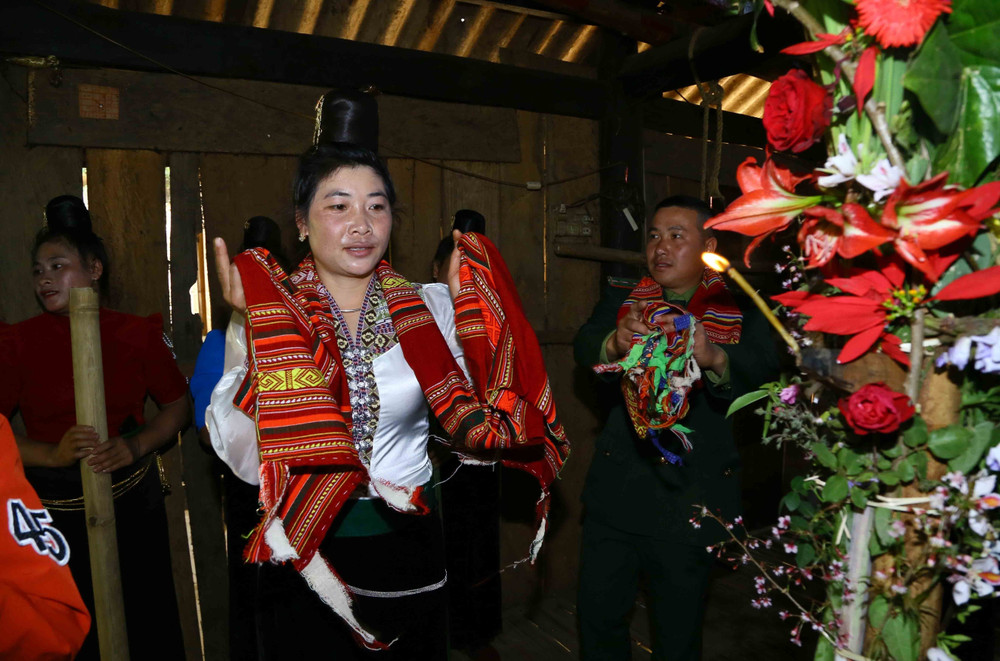
Although the economy is underdeveloped and life is still difficult, the Xinh Mun community has its own unique cultural beauty. Every year, as spring arrives, when the peach blossoms have faded, the “ban” flowers bloom on the hillsides, and the bitter bamboo shoots emerge in the forests, the Xinh Mun people celebrate the Ksai Sa Tip Festival, which is also known as the “Loc Hoa Festival.” This festival is a prayer for blessings, good harvests, and good health for all, ensuring strong bodies and bountiful crops.
The Loc Hoa Festival takes place after the Lunar New Year festival, with each household organizing the celebration individually. Each village holds as many days of celebration as there are households, with the festival lasting several days. However, it never occurs after the ban flowers have faded or when the bitter bamboo shoots are too high, as by then the rice cultivation season (beginning in early April) has started, and the festival would interfere with agricultural work.
While the festival is organized in each household, it serves as a time for the whole community to come together. Participation is voluntary, but anyone who does not take part is often ridiculed or ostracized from the community.
Although it is called a “festival,” it is not extravagant, and is organized simply. The offerings for the festival typically include two boiled chickens, a tray of new glutinous rice, a plate of betel leaves and areca nuts, three jars of rice wine, and two bowls of soup made from ban flowers and bitter bamboo shoots – a dish dedicated to the gods and ancestors, and considered mandatory.

A neu pole, 4 to 5 meters tall, is set up in the center of the house, decorated with green leaves and ban flowers, which are tightly bound to the pole. Additionally, the villagers attach golden ears of rice, left intact from the previous harvest, around the pole. Surrounding the pole are three jars of rice wine. Specially, there are 3 to 5 ban sang – a musical instrument created from small jars, where thin pieces of copper are inserted inside the jars. The instrument is played by threading a string through the lid, lifting and lowering it on the jar, while another stick is used to tap the jar rhythmically. This creates a unique sound, blending with the rhythm of the drums and gongs, and invites people to gather around the nêu pole for a lively and enthusiastic celebration.
The festival begins when the host (the person leading the ceremony) sits respectfully next to the offerings and prays: “Oh, spirit of the lower world, come and guard us today as we perform the Ksai Sa Tip ceremony. May the deities protect us, may we eat flowers instead of rice, drink wine instead of bamboo shoots, and consume incense instead of fragrant herbs. After eating, may you protect the joy, cure all sickness, and ensure happiness for all. The elders should advise the younger ones, and may all our wishes come true. May we live long and strong, may the spirits guard us, may we live like the bear in the forest, swift as the deer on the mountain.”
After the prayer, the host moves to the neu pole in the middle of the house, holds a jar of wine, and invites the ancestors to drink first with respectful words: “Oh ancestors, today is a lucky day. We see the results of our labor. We perform the Ksai Sa Tip ceremony. Please come and protect us, let us eat and drink in peace. Please do not let anyone get drunk and cause trouble, and let us avoid fights and dishonor. This year, let us have joy, and in the new year, let us have more joy. Let this bring peace to the village, and may all live long and strong.”
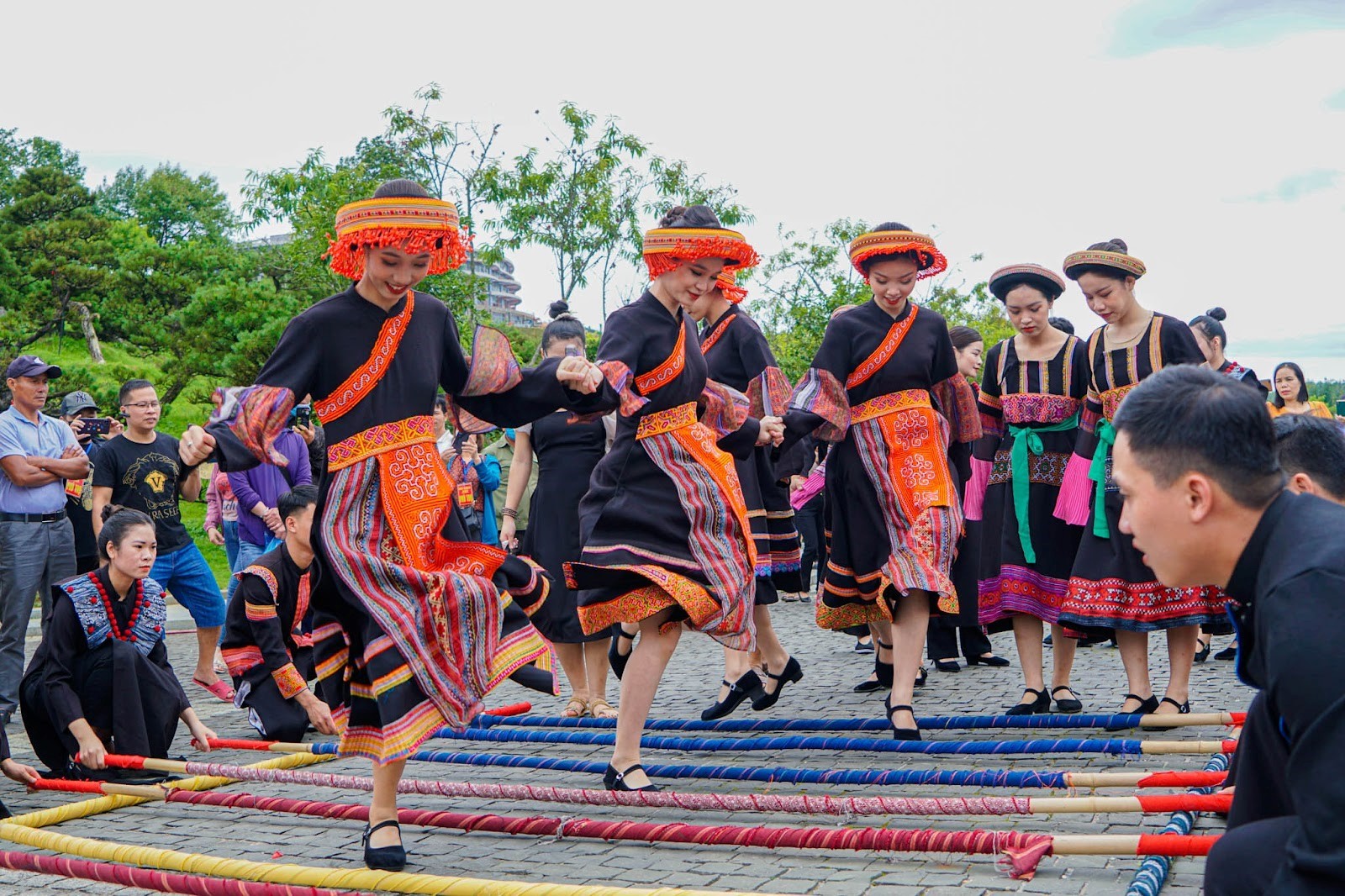
After inviting the ancestors to drink, the host respectfully invites three respected elders of the village, followed by the younger generations and the entire community, to join the ceremony and drink wine.
As the feast begins, the sounds of gongs, drums, and the ban sang instruments fill the air. Everyone holds hands and begins dancing around the nêu pole. Unlike the gentle and smooth xoe dance of the Thai, the xoe dance at the Loc Hoa Festival is lively and powerful, more energetic and louder. The dancing is accompanied by synchronized movements such as holding hands, using scarves to connect with one another, and forming a tug-of-war-like dance (which is unique to this festival). The dancing lasts for about an hour, with the rhythm of the drums and music gradually softening. The participants then invite each other to drink rice wine and continue dancing, repeating this cycle until the morning light appears.
Unlike festivals of other ethnic groups, the Ksai Sa Tip Festival of the Xinh Mun people lasts for several days but is not about extravagant feasting. There is no singing, only dancing. It is simple, joyful, and typically held in each family during cozy evening gatherings. It reflects the cultural identity of an ethnic group living in the remote Vietnam-Laos border area.
